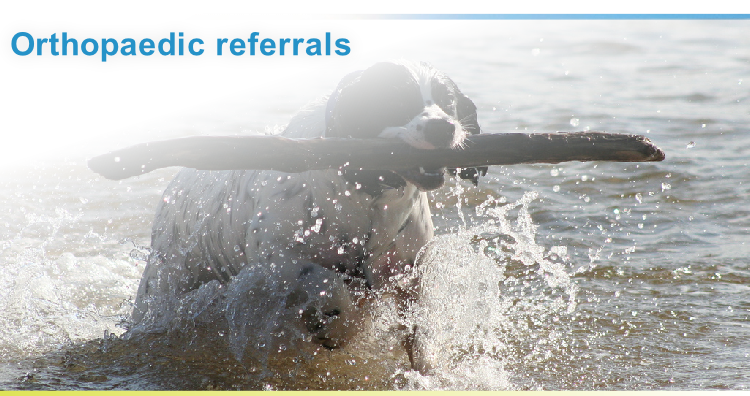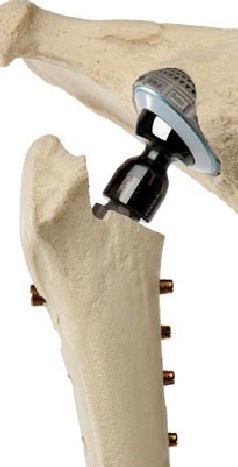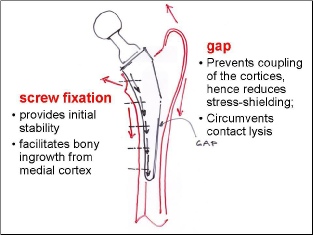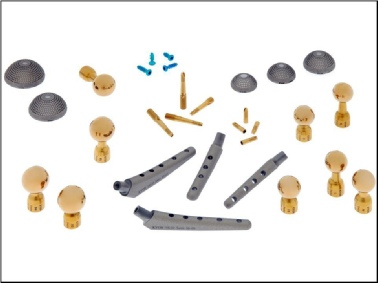

Total Hip Replacement surgery for hip dysplasia in dogs.
Total Hip Replacement is an effective treatment for Hip Dysplasia & Hip arthritis in both young &older medium, large & giant breed dogs.
Specialist Veterinary equipment
Kyon - Swiss Zurich Cementlesst Total Hip Replacement (THR) instrument system and implants
Hall oscillating medical system
3M mini driver system
Total Hip Replacement (THR) & Hip Dysplasia

How to Treat Hip Dysplasia in Dogs- Video
How to Recognise Hip Dysplasia in Dogs- Video
Total Hip Replacement in Dogs- Video
Hip Dysplasia, Osteoarthritis & Total Hip Replacement
A normal hip is a tightly joined “ball and socket” joint. The normal hip joint enables the hind leg to move smoothly in a full range of motion and allows a dog to rise, walk, run, jump, and turn effectively. In the diseased hip, the “ball and socket” become irregular, rough, and deformed, causing pain and decreased range of motion.
Total hip replacement (THR) surgery replaces a painful and dysfunctional hip joint with an artificial prosthesis, in order to provide a pain-free, fully functional joint.
We use the Kyon Swiss Zurich cementless Total Hip Replacement system at our clinic for dogs. This system was developed in Switzerland in the 1990’s and is used for dogs greater than about 15-18kg in size. Over 7,500 prostheses have now been implanted, with over 140 surgeons world-wide using the system. www.kyon.ch
This surgery is typically performed on a dog with severe hip pain due to conditions called hip dysplasia and osteoarthritis. Total hip replacement can also be considered for a dog with a painful and abnormal hip due to fracture, luxation (dislocation), or necrosis (severe degeneration) of the femoral head.
A USEFUL VIDEO ON HIP REPLACEMENT IS FOUND AT THE BOTTOM OF THIS PAGE
Hip Dysplasia
Hip dysplasia, meaning abnormal growth of the hip, is a common problem in dogs. Dysplastic hips are painful and lack smooth movements; therefore the dog’s quality of life can be severely affected. Selection of the appropriate treatment option for this condition is dependent on many factors such as: age, severity of hip dysplasia, development of osteoarthritis, degree of pain/discomfort.
Treatment Options and Methods for Hip Dysplasia in dogs:
Many dogs with pain and lameness associated with hip dysplasia can be effectively managed with conservative methods.
Conservative methods include: weight management, moderation of excessive exercise/activity, providing warm comfortable bedding, and the use of non-steroidal anti-inflammatory drugs, physical rehabilitation, and oral supplements as needed. If conservative methods are ineffective or in some young dogs with hip dysplasia corrective or salvage hip surgery may be considered.
Early corrective surgery to preserve the existing hip joint may be suitable- for example Triple Pelvic Osteotomy (TPO) or Juvenile Pubic Symphysiodesis JPS. See page on TPO for further information on these procedures.
If the dog has severe hip pain and the quality of life is decreased, and if conservative methods are not effective, salvage surgical treatment should be considered. Salvage surgery include Total Hip Replacement which is the gold standard and also Femoral Head and Neck Excision.


Kyon Cementless Total Hip Replacement in dogs utilises the “press-fit” achieved by very precise placement of the implants into the bone, rather than using bone cement to anchor them in place. The femoral component is further anchored by bone screws. The Kyon system does not require the femoral component to be tapped into place hence reducing the risk of femoral fracture at surgery. Also, the ability to place a hip system in a dog without using bone cement reduces the amount of foreign material implanted at surgery and also reduces the infection risk. Hip replacement have a 90% success rate. Unfortunately most of the complications of any Total Hip Replacement method require some form of revision surgery to correct them.
During the post operative period it is necessary to control the level of activity. Once the dog has fully recovered (approx 6-12 weeks post surgery) they are able to perform activities you would expect of a normal dog. We recommend control of exercise with extendable lead exercise providing a moderate level of activity.
The titanium and titanium alloy femoral components (stem) and the acetabular components (cup) are coated to encourage bony in-growth over time which further stabilises the implants in place. The aim of the Kyon Zurich cementless system is to provide indefinitely stable bone anchorage reducing one of the complications encountered with cemented systems of late onset aseptic loosening between the bone and cement.
The femoral heads have now Amorphous Diamond Like Coating to reduce friction and wear and are designed to last the entire life of the dog.
The Kyon hip system and its method of stabilisation has the specific advantage of allowing it to be placed in young dogs with severe hip dysplasia which have been unresponsive to medical treatment.


Implants of various sizes and lengths are available to suit most dogs over approximately 15-18kg.
Not all dogs with hip disease are suitable for hip replacement. Suitability is assessed following clinical and radiographic examination and case discussion with the pet’s owners.
Total Hip replacement is a major surgery although following careful selection of cases for surgery the prognosis for return to active function without pain is generally good. Most dogs are weight bearing on the leg the following day and making excellent progress at six week check ups. Prior to THR surgery we will assess response to medical/ conservative treatment options, advise you of costs and potential risks/ complications of surgery and how to look after your dog post operatively.

| elbow arthroscopy key hole surgery dog ireland |
| elbow dysplasia |
| vet-arthroscopy-shoulder ocd-dog |
| shoulder arthroscopy dog- ligament injury |
| stifle arthroscopy dogs |
| hip arthroscopy dog |
| spinal xray myelogram |
| GSDA A stamp |
| elbow score |
| hip score |
| hip score guide for owners |
| directions |
| site map |